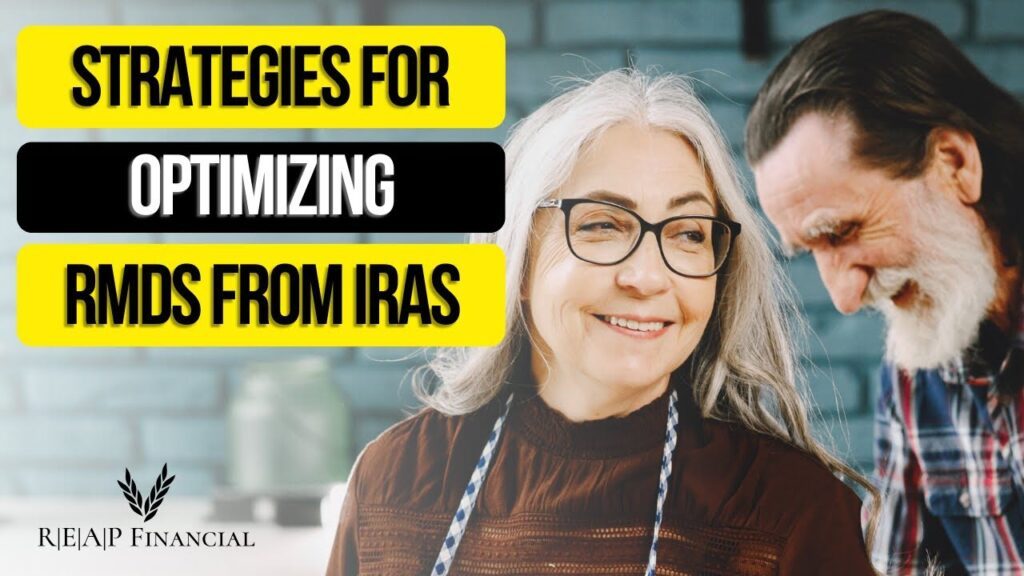If you’re not already retired, would knowing you’d be in a higher tax bracket in retirement change how you’re currently saving and investing?
In this article, we’re going to review why so many successful retirees find themselves in higher tax brackets in retirement, even if the tax rates stay the same. Keep reading to learn why tax deferral isn’t always the best strategy headed into retirement!
Tax Brackets in Retirement: The New Reality
So many of our retirees at REAP Financial tell us if they’d known they would be in the same or even a higher tax bracket in retirement, they would have changed where they put their money as they worked towards retirement. While many are preparing for retirement, they assume that since they won’t receive a paycheck in retirement, they’ll be in a lower tax bracket. However, for successful retirees, that is not always the case. For this reason, tax deferral may not be the best approach for everyone in the retirement preparation, three to five years out.
The Drawbacks of Tax Deferral
Tax deferral is the foundation of how many approach their retirement and savings. When 401Ks were introduced in the 1980’s, they made a lot of sense. The idea that you could put in money without paying taxes, let it grow, and then pull out that money in retirement when you were likely in a lower tax bracket was very appealing.
However, now since the Roth IRA and 401K are available, the reality has shifted so that traditional IRAs and 401s are not always the best option. Now, we encourage clients to look more seriously at those non-tax deferred accounts, such as Roth IRAs and Roth 401ks. The complication with tax deferral now is that when you have money in IRAs or 401Ks, it is a one-sided relationship. The government gets to dictate how much tax you’ll pay on that money in the year you pull it out. Many people defer taking any money out of these accounts, until they have to through required minimum distributions.
Required Minimum Distributions (or RMDs) start to take effect at age 73 or 75, depending on when you were born. In many cases, this is when you see retirees move up a tax bracket, since these RMDs are taxed at income rates not favorable capital gains rates. For many successful retirees, their RMDs are so large that they’ll push them up a tax bracket significantly, such as from 12% to 22% or 22% to 32%. That means that every dollar in those RMDs will be taxed at a higher rate, indefinitely in many cases. It also means that your social security payments and any pensions that aren’t tax-free will be taxed at a higher rate. Finally, with that higher tax bracket, you’ll be paying more for your Medicare premiums.
Changes in Tax Laws and Inheritance Rules
As you can see, these impacts add up to a snowball effect. Plus, after the Secure Act 2.0 passed a few years ago, the idea of leaving tax-deferred accounts to your heirs is less attractive. Before that act passed, you could leave an IRA or 401K to your heirs and they could distribute the earnings from those accounts out over their lifetime, referred to as a “stretch IRA.” This was very favorable, since the heir could largely hold the funds, taking out only a small amount every year, and allow it to grow even more.
Now, under today’s law, if you leave an IRA or 401K to your heirs, they have to withdraw it over 10 years. While they can let it continue to defer, the entire account has to be distributed 10 years after they inherit it. So, if you leave money to your heirs in their 50’s and 60’s, they could potentially be forced to take out that 401k or IRA money within 10 years, likely in their highest earning years. This also assumes that tax rates could be higher down the road, especially in comparison to the low rates today in 2024.
Another reason to say goodbye to tax deferral is the potential consequences of losing a spouse. If you lose a spouse in late retirement, it is not uncommon for your portfolio to shrink overnight, since you then have to file taxes as a single-filer. When you receive your spouse’s 401k and/or IRA, you will still be required to take the RMDs on those. However, now you’ll be taxed more unfavorably as a single filer. At REAP Financial, we call this the “Widow’s Penalty.” In many cases, you’ll see your tax bracket and Medicare premiums go up because you don’t get the benefit of filing taxes jointly.
Using Roth Accounts to Build Tax-Free Money
These are just a few of the reasons you should consider putting money in the Roth IRA and/or the Roth 401k, if you’re still working. It can be a powerful way to build a foundation of tax-free money. Remember, those funds are tax-free for you and for your heirs. Most importantly, your Roth accounts are not subject to RMDs under today’s law.
If the majority of your retirement funds are in pre-tax accounts like most Americans and you want to get in the Roth game, get a copy of our Tax Explorer Guide by emailing retire@reapfinancial.com. This free resource is updated for 2024 and will help you navigate these tax deferral decisions, so you can maximize your funds in retirement.
Financial & Retirement Planning for Austin, Texas Retirees
If you find yourself in Austin, Texas, and are on the lookout for a skilled retirement planner, consider connecting with our expert team at REAP Financial. We are dedicated to designing personalized retirement strategies that are tailored to your specific financial objectives and lifestyle ambitions. Allow us to guide you through all the intricacies of retirement planning to secure a stable and fulfilling future for you and your loved one. Contact us today for a consultation, and begin your journey toward a serene retirement in Austin.
Phone: (512) 249-7300
Our Main Office Address
REAP Financial
9414 Anderson Mill Rd #100
Austin, TX 78729





